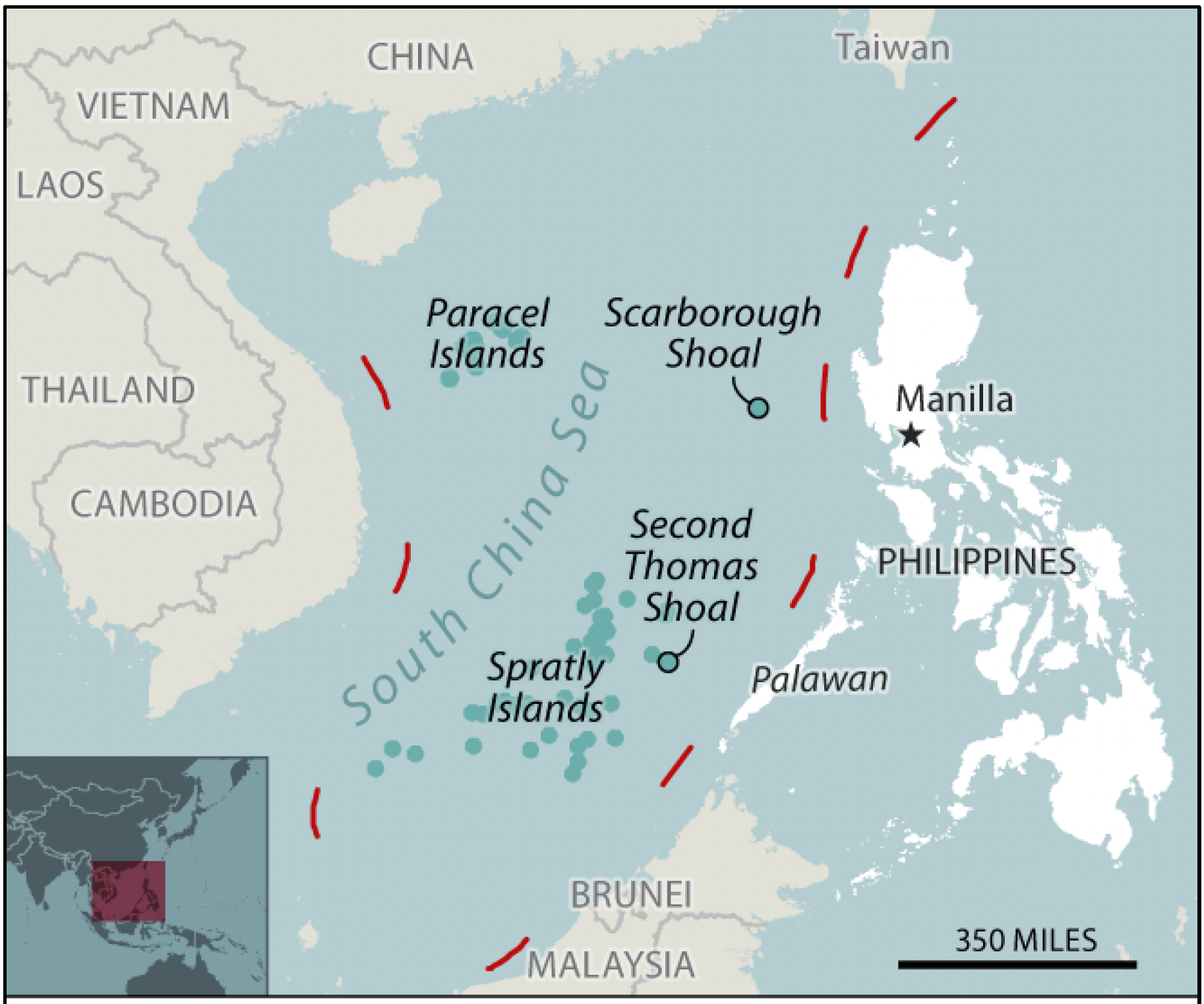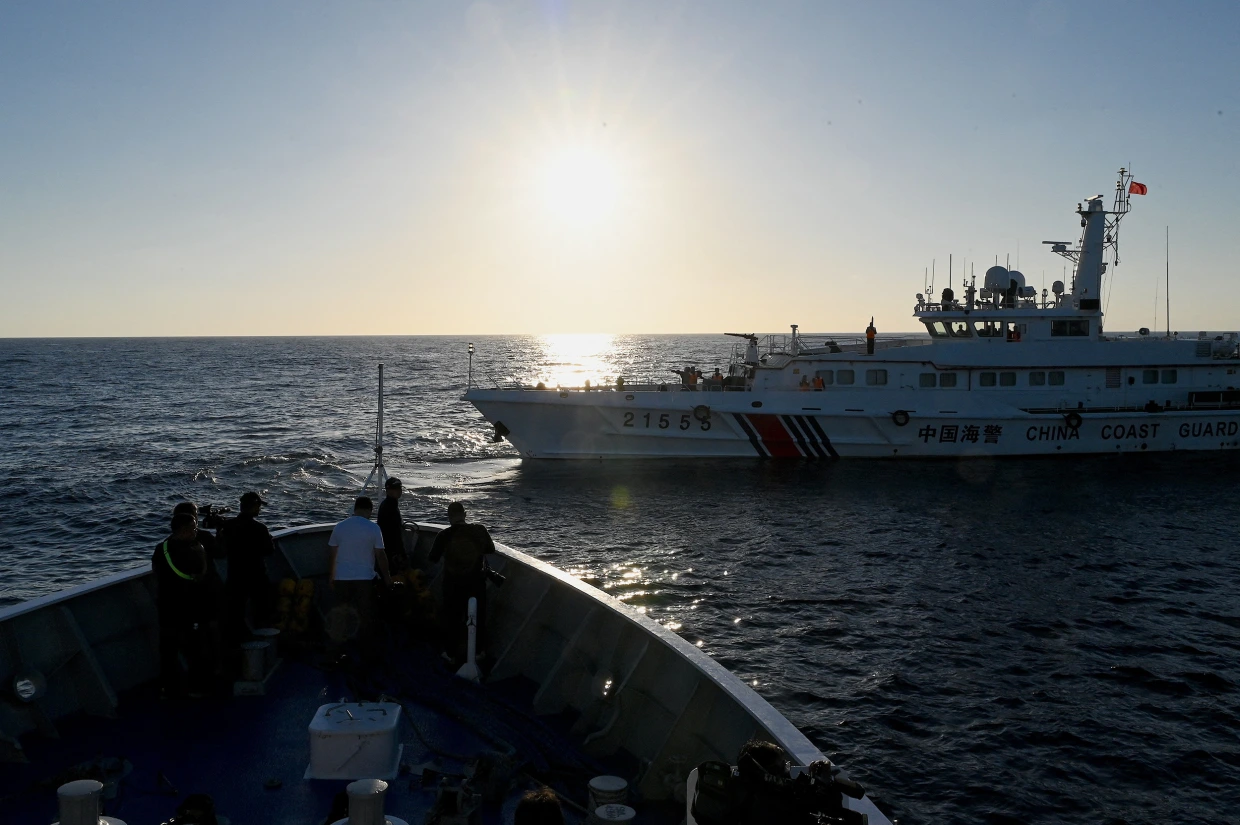The Emerging Crisis at the Second Thomas Shoal
Bottom Line: The People’s Republic of China is threatening to seize control of part of the Philippines, a defense treaty ally of the United States. The Second Thomas Shoal is to the Asia-Pacific what Crimea was to Europe: a canary in the coal mine for military coercion. Failing to stand up to Beijing here will signal to China that it can engage in provocation without international accountability.
What is the Second Thomas Shoal?
- The Second Thomas Shoal is a submerged reef in the Spratly Islands, an archipelago belonging to the Philippines according to an international Arbitral Tribunal, but which has been illegally claimed by China.
- The Philippines grounded a military ship, the Sierra Madre, on the Second Thomas Shoal in 1999 to reinforce their sovereignty claims over the area. The Philippines maintains marines on the ship to
demonstrate it is an active military site. President Biden has declared the ship falls under the U.S.-Philippines Mutual Defense Treaty. - Since 1999, the Philippines has consistently conducted scheduled “rotation and resupply” missions to transport provisions and rotate military personnel to and from the makeshift outpost
- Starting in 2013, China has positioned a coast guard patrol to provoke the Philippine missions as they resupply the ship, and frequently prevents the Philippines from resupplying marines on the Sierra Madre.
- In 2014, China embarked in a full-scale blockade of the Sierra Madre for three weeks, forcing the Philippines to airdrop supplies.
- Starting in 2022, Chinese coast guard and militia vessels ramped up efforts to impede resupply missions, frequently gathering around the shoal in larger formations and resorting to assertive measures to obstruct Philippine ships from reaching the Sierra Madre.
- China defends these actions by alleging that the Philippines is transporting construction materials, suggesting their intention to either fortify the Sierra Madre into a permanent structure or establish a new outpost altogether on Second Thomas Shoal.

Recent Escalations:
- On March 23, 2024, Chinese coast guard ships hit a vessel from the Philippines, which led to injuries of Filipino crew members and substantial damage to the ship.
- The Philippine military leadership remarked that this incident marked the initial occurrence of a resupply boat failing to dock alongside the Sierra Madre and only the second instance where Philippine personnel sustained injuries during the resupply operations since China’s harassment campaign commenced in August 2023.
- A similar incident occurred on June 17, 2024, when Chinese ships collided with Philippine vessels after engaging in dangerous maneuvers near Ayungin. The Chinese coast guard rammed Philippine ships to stop them from resupplying the Sierra Madre and boarded the navy vessels to confiscate equipment.
- The incident severely injured a Philippine Navy sailor and hindered maritime operations to supply food, water, and supplies to personnel within the Philippines’ exclusive economic zone. Chinese coast guard used knives and machetes to puncture Philippine rubber dinghies, resulting in the loss of one Philippine sailor’s finger and injuring seven others.
- China claims that Manila is bringing construction materials onto the ship due to its potential disintegration. China also claims that the Philippines are going back on their promise to remove the ship, which Manila denies.
- The Filipino spokesman stated that they refuse to let up in their resupply missions of Sierra Madre, and that their counteroffensive in response to China’s aggression in the South China Sea would be “multi-dimensional” and not exclusively military in nature.
- China views this as an opportunity to test American red lines, and they may choose to construct a military outpost on the reef in order to have a military base close to the Philippines if a broader conflict over Taiwan should erupt.
- Former INDOPACOM Commander Aquilino reportedly issued a warning to a delegation of retired Chinese military officers that the United States would respond to any Chinese incursion at the Second Thomas Shoal.
- The Second Thomas Shoal arguably poses the greatest immediate risk of escalation between the U.S. and Chinese militaries as we have declared our obligation to respond if China were to attack the Philippines.
What Should the United States Do Next?
- The United States has a longstanding Mutual Defense Treaty with the Philippines, and we are bound to protect their territory from Chinese aggression. We should continue to publicly and privately reaffirm our commitment to this treaty, as both the Trump and Biden Administrations have frequently done.
- The United States shouldn’t be cowed by Chinese threats. Instead, we should consider engaging in joint resupply operations with the Philippines and look into options to help them replace the ship with a more permanent outpost.
- The U.S. military should work to rebuild a military presence in the Philippines, particularly at four new sites recently outlined in a U.S.-Filipino joint defense cooperation agreement.
- President Biden and our national security leaders must demonstrate–through actions as well as words–that we will not let China violate the Philippines’ territorial sovereignty.
- There must be no public caveats about “minor incursions”, nor desperate offers of concessions and pleading for dialogue. Biden already failed to deter Russia from invading Europe; he must learn from the lessons of that invasion and stand strong against China here. The PRC expects weakness. We must show strength.
Background: U.S.-Philippines Mutual Defense Treaty
- The treaty was signed in 1951 and obliges both countries to come to each other’s defense.
- The treaty’s obligation of mutual defense is enacted upon an attack against either nation’s armed forces, territories, or vessels.
- Articles IV and V state that any attack in the Pacific, which extends to the South China Sea, would invoke mutual defense commitments from the United States.

